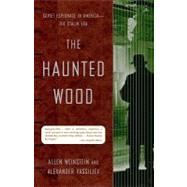
Note: Supplemental materials are not guaranteed with Rental or Used book purchases.
Purchase Benefits
What is included with this book?
| Acknowledgments | xi | ||||
| Introduction | xv | ||||
| Cast of Characters | xxi | ||||
| PART ONE: Burden of Innocence: The New Deal Years | 1 | (150) | |||
|
3 | (19) | |||
|
22 | (28) | |||
|
50 | (22) | |||
|
72 | (12) | |||
|
84 | (26) | |||
|
110 | (30) | |||
|
140 | (11) | |||
| PART TWO: The Third Front: Soviet Espionage in the Second World War | 151 | (130) | |||
|
153 | (19) | |||
|
172 | (51) | |||
|
223 | (15) | |||
|
238 | (27) | |||
|
265 | (16) | |||
| PART THREE: Discovery: Cold War Confrontation | 281 | (58) | |||
|
283 | (28) | |||
|
311 | (28) | |||
| Epilogue: Aftermath and Legacy | 339 | (6) | |||
| Notes | 345 | (32) | |||
| Bibliography | 377 | (6) | |||
| Index | 383 |
The New copy of this book will include any supplemental materials advertised. Please check the title of the book to determine if it should include any access cards, study guides, lab manuals, CDs, etc.
The Used, Rental and eBook copies of this book are not guaranteed to include any supplemental materials. Typically, only the book itself is included. This is true even if the title states it includes any access cards, study guides, lab manuals, CDs, etc.
Excerpted from The Haunted Wood: Soviet Espionage in America--the Stalin Era by Allen Weinstein, Alexander Vassiliev
All rights reserved by the original copyright owners. Excerpts are provided for display purposes only and may not be reproduced, reprinted or distributed without the written permission of the publisher.